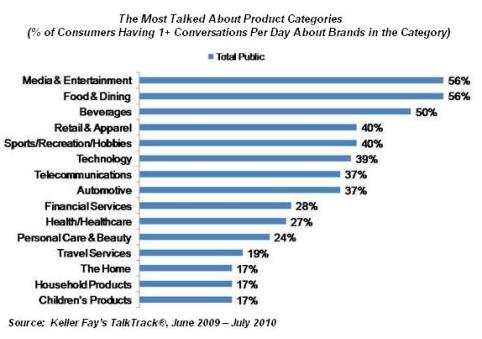What Gets People Talking? New Research from Wharton Reveals Surprising Answers - Ed Keller - MediaBizBloggers

There is an abundance of attention paid to the tools and technologies that brands can use to facilitate social interaction with and between consumers. Similarly, there are now strong tools and techniques to measure the effectiveness (including ROI) of social media and word of mouth efforts.
But far less attention has been paid to understanding what motivates people to talk in the first place. And this has been a significant void. After all, if people are not motivated to talk, then regardless of how easy you make it for them to share they are not going to do so. Understanding what drives conversation allows brand marketers to plan smarter and more successful viral and word of mouth strategies.
New research from Wharton Marketing Professor Jonah Berger and doctoral student Eric Schwartz sheds new and important light on this topic. Their focus is on the psychological processes behind word of mouth – in other words, what causes WOM – rather than on the outcomes – or consequences – of WOM.
One of the key findings of this new research challenges the notion held by many that the only (or most likely) products to be talked about are the ones that are the most interesting (e.g., unusual, remarkable, or surprising) – think iPad, for example. I get asked this question quite frequently: Isn't it just cool, new, breakthrough products that get talked about? What about everyday brands or products that have been around for a long time? Isn't it harder for them?
Keller Fay research has generally found this is not true. Yes, Apple is among the 10 most talked about brands in America, according to TalkTrack®, our ongoing study of offline and online word of mouth but so are more "everyday" brands such as Coke, Pepsi, and Walmart. So what's going on?
The Wharton research finds "no evidence that more interesting products are talked about more frequently over the multi-month period of a marketing campaign." While products which are deemed "more interesting" might receive immediate, short-term WOM, this "bump" is short-lived and tends not to translate into more ongoing WOM over a period of time nor do they receive more WOM overall. In other words, "while more interesting products may be talked about more right after people first get them, there is little evidence that they continue to receive more discussion in the months that follow."
So if it's not interesting products that get talked about over a sustained period of time, what are the key triggers of WOM? It turns out that visual cues (often prompted by product usage) are very important drivers of word of mouth, and as a result products that are used more frequently are talked about more frequently (and by more people). In other words, according to Wharton, "products that are cued more by the environment receive both more immediate and more ongoing WOM (though the relationship is significantly stronger for the latter). Products that are cued more frequently by the environment are also talked about more overall." In contrast, "more interest products receive more immediate WOM, but . . . they do not receive more ongoing WOM."
The role of cuing in word of mouth can be seen in the results of Keller Fay's TalkTrack®, which finds the most talked about categories are ones that indeed get used the most frequently – especially media/entertainment, food/dining, and beverages. None are necessarily driven (at least on a consistent basis) by break-through technology or products that are "new and cool."

The Wharton research is an important reminder to marketers that while it is easy to assume that only new or surprising products drive WOM, or outrageous stunts; however, this is not necessarily the best way to drive sustained word of mouth. Every day products can get lots of word of mouth if they are cued frequently by the environment, which suggests the importance of a holistic approach to WOM, one that takes advantage of all aspects of consumer engagement (including product usage, advertising, point of sale activity, and promotional strategies) to "cue" conversation and drive word of mouth.
Ed Keller, CEO of the Keller Fay Group, has been called "one of the most recognized names in word of mouth." The publication of Keller's book,The Influentials, has been called the "seminal moment in the development of word of mouth." Ed can be contacted at ekeller@kellerfay.com.
Read all Ed’s MediaBizBloggers commentaries at Ed Keller - MediaBizBloggers.
Check us out on Facebook at MediaBizBloggers.com
Follow our Twitter updates @MediaBizBlogger


